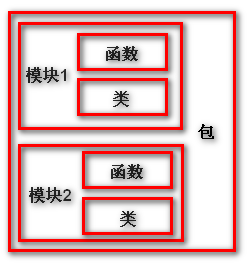Python程序结构
2018-10-10 14:35 更新
Python的程序由包,模块(即一个Python文件)和函数组成。包是由一系列模块组成的集合。模块是处理某一类问题的函数和类的集合。

包中必须至少含有一个__init__.py文件,该文件的内容可以为空。用于标识当前文件夹是一个包。
if语句
>;>;>; x = int(raw_input("Please enter an integer: "))
>;>;>; if x < 0:
... x = 0
... print 'Negative changed to zero'
... elif x == 0:
... print 'Zero'
... elif x == 1:
... print 'Single'
... else:
... print 'More'
...
for语句
>;>;>; # Measure some strings:
... a = ['cat', 'window', 'defenestrate']
>;>;>; for x in a:
... print x, len(x)
...
cat 3
window 6
defenestrate 12
用range函数实现计数循环
>;>;>; for i in range(3): print i, 'Pythons'
...
0 Pythons
1 Pythons
2 Pythons
while语句
>;>;>; x = 'spam'
>;>;>; while x:
... print x,
... x = x[1:]
...
spam pam am m
break continue pass else循环
- break 跳出循环
continue 跳到循环顶部
pass 什么也不做,只是一个占位的空语句
else 运行并且只有在循环正常退出的情况下运行
while <条件测试>;:
<语句>;
if <条件测试>;: break #现在跳出循环,忽略else
if <条件测试>;: continue #现在转到循环顶部
else:
<语句>; #如果没有遇到break
以上内容是否对您有帮助:

 免费AI编程助手
免费AI编程助手




更多建议: